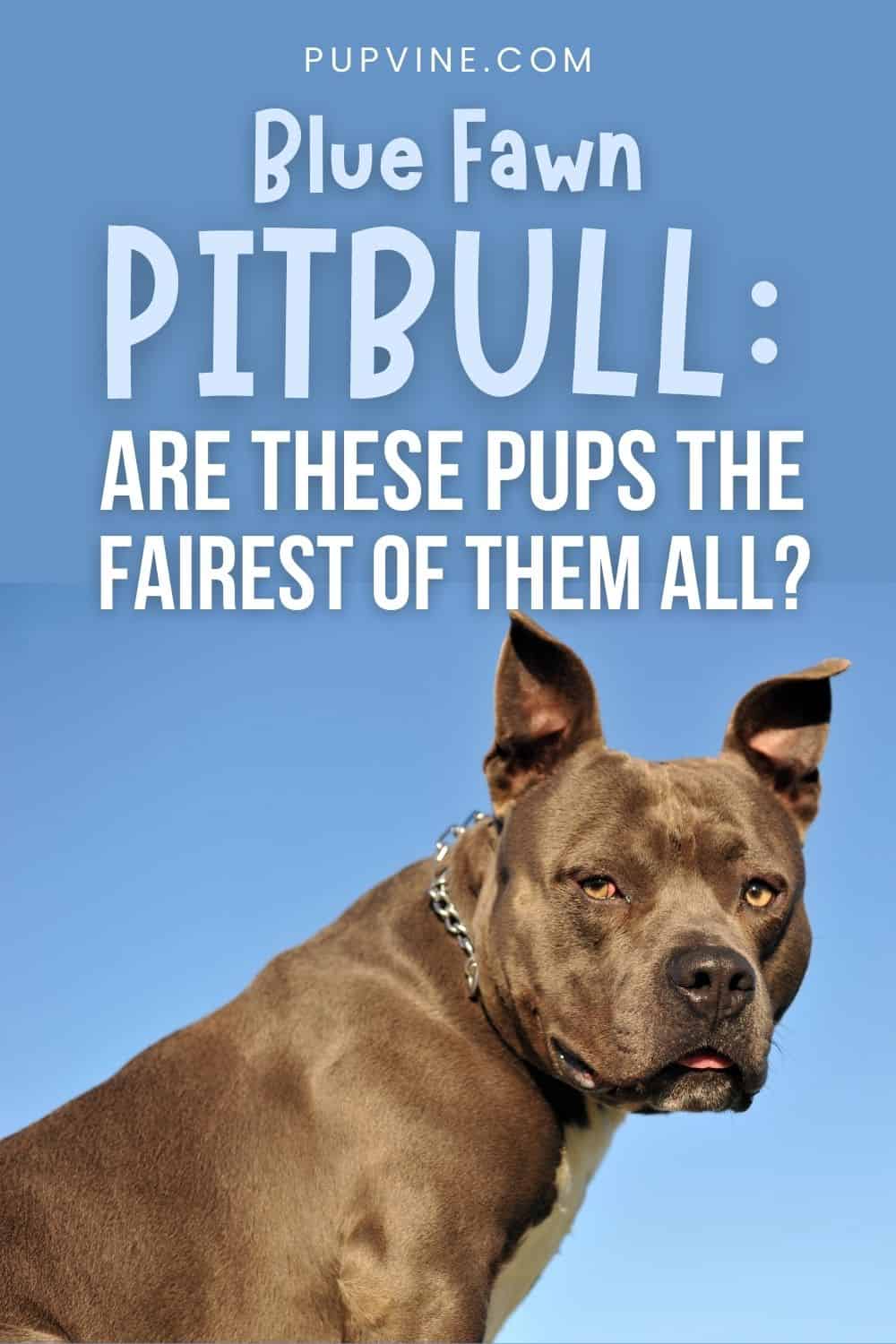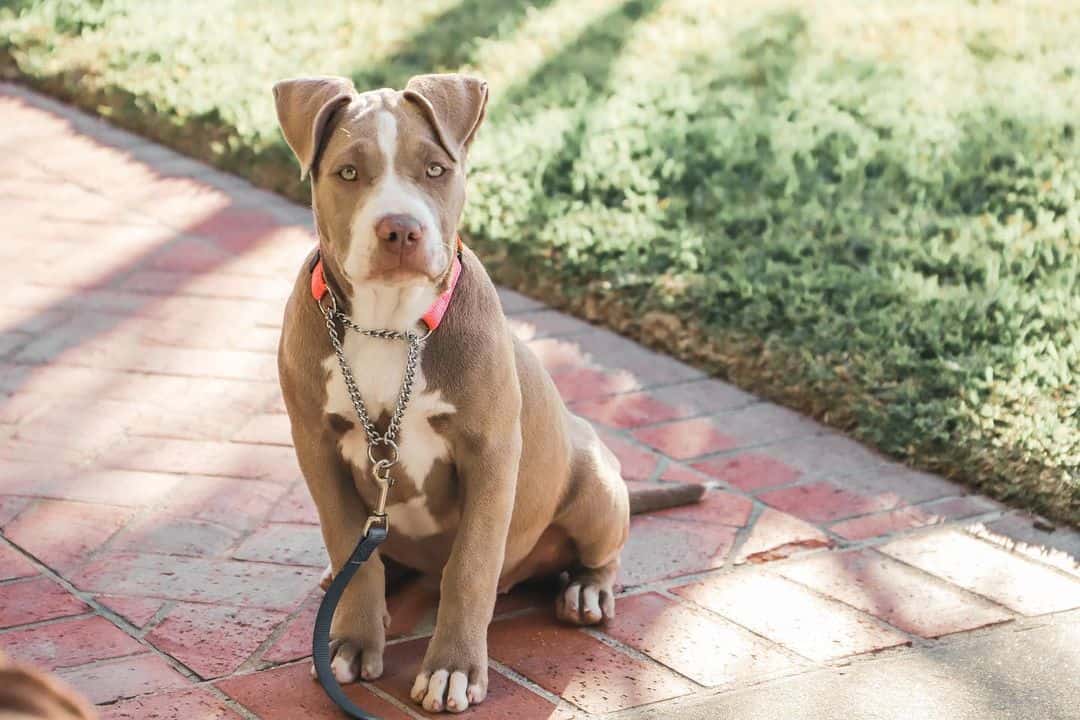While they might not have the best reputation out there, Pitbulls are still beloved dogs all over the world. Despite what people think, they have a balanced temperament and make amazing guard dogs and family dogs alike.
These powerful dogs will make you the talk of the town. They are strong and beautiful, and Pitbull owners are proud of their amazingly affectionate pups.
Not many people are aware that Pitbulls, next to being strong and active dogs, are also very colorful canines. There are many Pitbull colors out there. Parti, brindle, merle, sable, black and white, blue and white… Pitbulls can come in all!
But one color that truly stands out is the blue fawn Pitbull.
Many dog lovers consider blue fawn Pitbulls one of the most beautiful color varieties in Pitbulls. But what do these dogs actually look like? And are they different from standard Pitbulls?
Let’s find out!
What Is A Blue Fawn Pitbull?
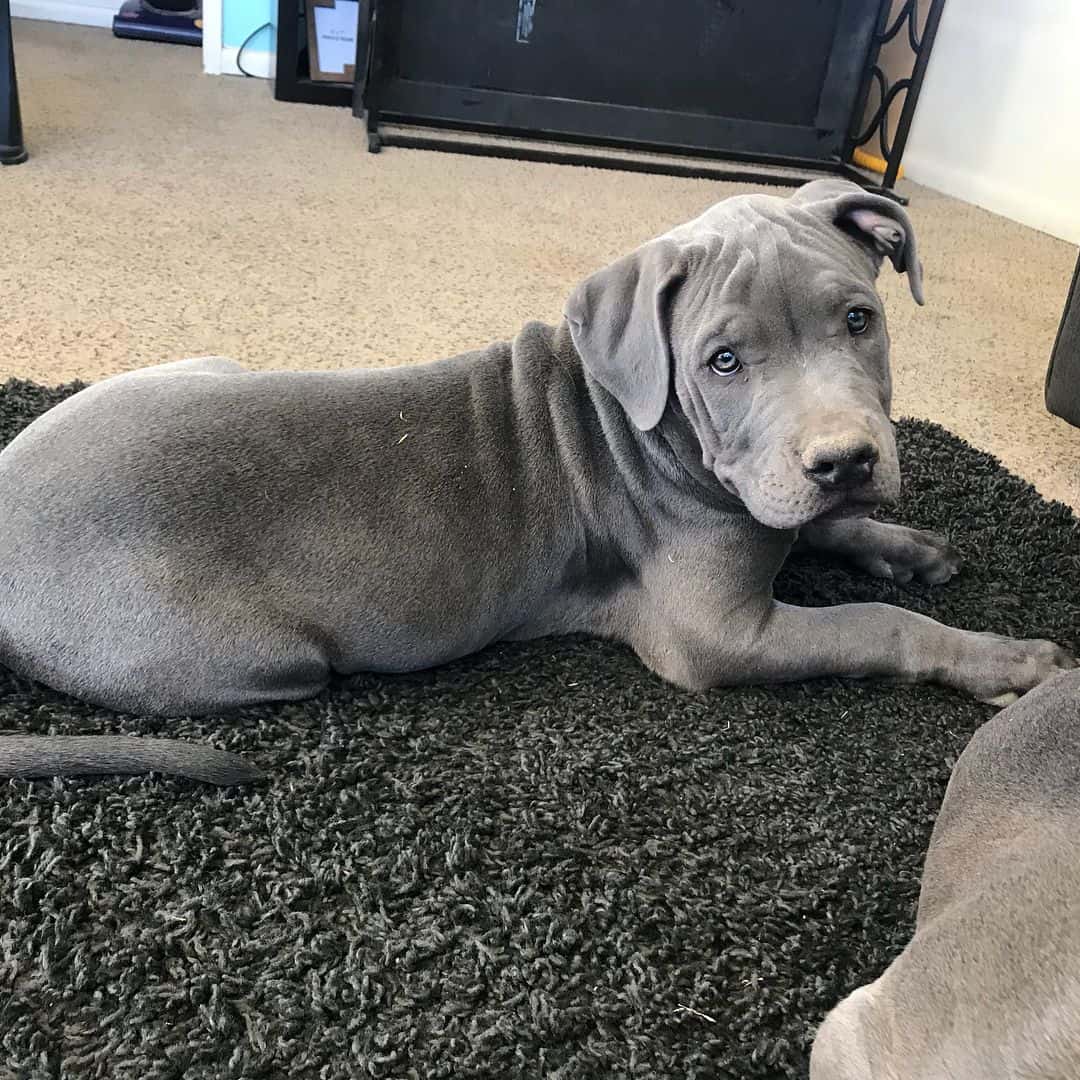
Photo from: @walker_pitbulls_
A blue fawn Pitbull is, in fact, a blue Pitbull with a fawn coat color. Does this sound confusing? I’ll explain in a bit.
But first, we need to understand what a Pitbull is.
A Pitbull is an umbrella term that actually includes four Pitbull breeds:
• American Pit Bull Terrier
• American Bully
• American Staffordshire Terrier
• Staffordshire Bull Terrier
Some people also consider the American Bulldog as a fifth Pitbull breed.
It’s important to note that Pitbull as a breed is not recognized by the American Kennel Club (AKC), as well as the dog most people think about when they say a Pitbull dog, the American Pit Bull Terrier.
On the other hand, this dog breed is recognized by the United Kennel Club (UKC) and the American Dog Breeders Association (ADBA).
As such, don’t be surprised if you hear your blue fawn Pitbull isn’t recognized by the AKC. No Pitbull is!
Still, these are medium size, muscular dogs, with a smooth, short coat. They have short legs compared to the rest of their body, giving them an even bulkier look.
But what about blue fawn Pitbulls? Does this color variation make these doggies special?
Let’s find out more about them.
Blue Fawn Pitbull Colors
A blue fawn Pitbull is a result of a very specific gene combination.
To get this extraordinary dog, a puppy needs to inherit two specific dilution genes from his parents – one from each. As these are recessive genes, sometimes they are not as easy to find.
These dilution genes will turn the black color into a diluted form – in this case, a blue fawn coat color.
Also, if a puppy inherits a single dominant color gene from a parent, the blue fawn color will be lost. This is what makes breeding them challenging.
Blue fawn color can be quite common in some other breeds related to Pitbulls, such as the French Bulldog, English Bulldog, and Weimaraners.
While you might find a solid-colored blue fawn Pitbull, these dogs usually come with some patterns or markings.
As such, you can have a few different color combinations – and even two types of these doggies!
Here’s what we mean:
1. Blue Fawn Red Nose Pitbull
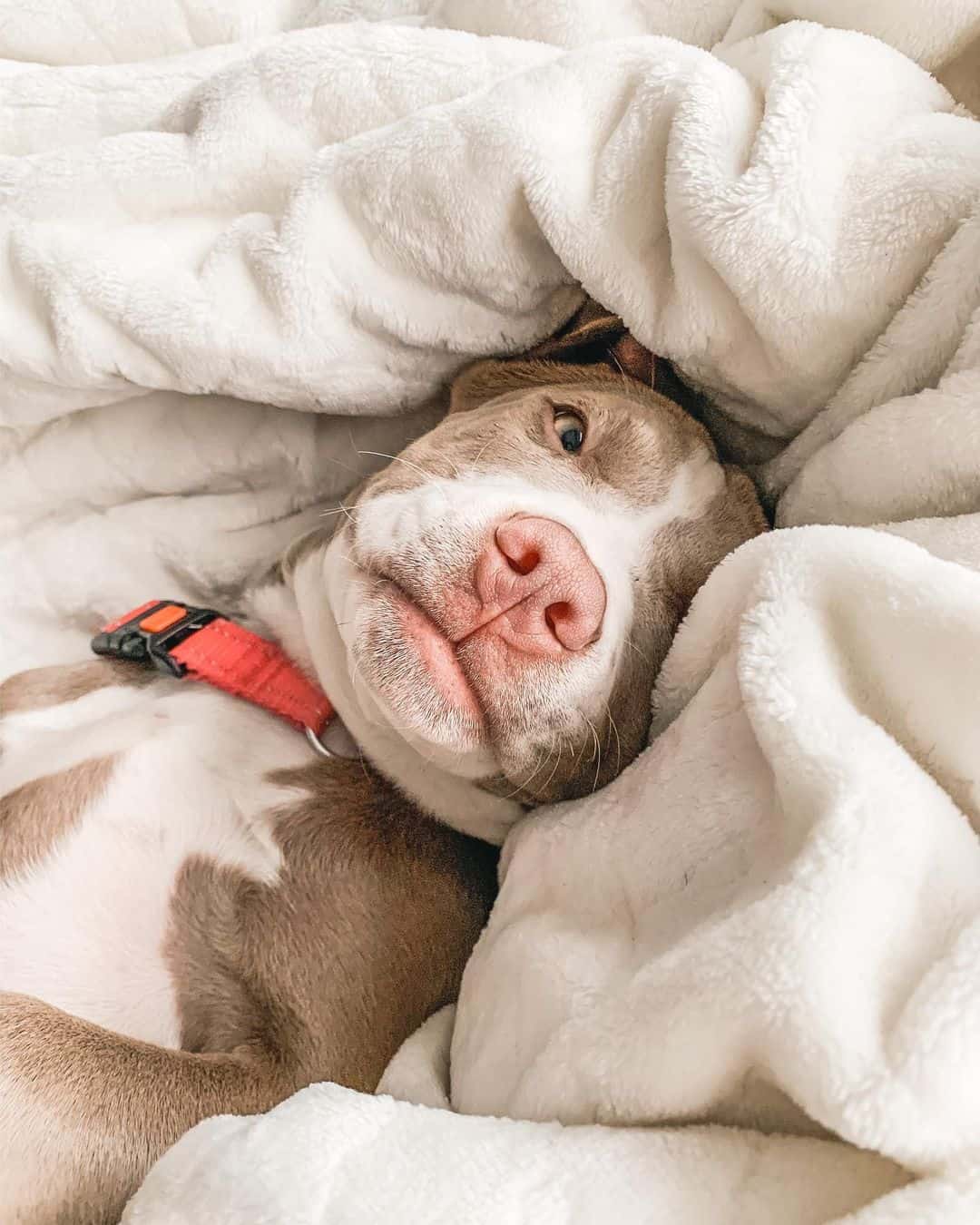
Photo from: @cocothebfpitbull
There are two types of Pitbulls based on the color of the dog’s nose:
• Red nose Pitbulls.
• Blue nose Pitbulls.
A standard blue fawn Pitbull belongs to the red nose Pitbull type. This means that their nose is a pale red or pinkish color.
These dogs usually look the same as blue nose Pitbulls, except for their nose color. In fact, the genes that cause the red nose also affect the color of the eye rims, lips, and paw pads.
The combination of a red nose and blue eyes makes these dogs a rather unique sight. In fact, many would consider them the most beautiful Pitbull color of them all.
Still, it’s important to note that there is a slight difference in temperament in the red nose and blue nose Pitbulls – although it is barely worth mentioning since it all comes down to dog training and socialization.
Red nose Pitbulls are friendly yet fairly calm. They aren’t likely to jump on humans or try to invade your space. They know how to respect everyone’s privacy, although they wouldn’t mind spending an entire day with you.
Still, they can be a bit wary of strangers and alert, so they make great watchdogs and guard dogs. This isn’t to say they make bad family pets – quite the opposite. However, they are mostly bred for this purpose.
2. Blue Fawn Blue Nose Pitbull
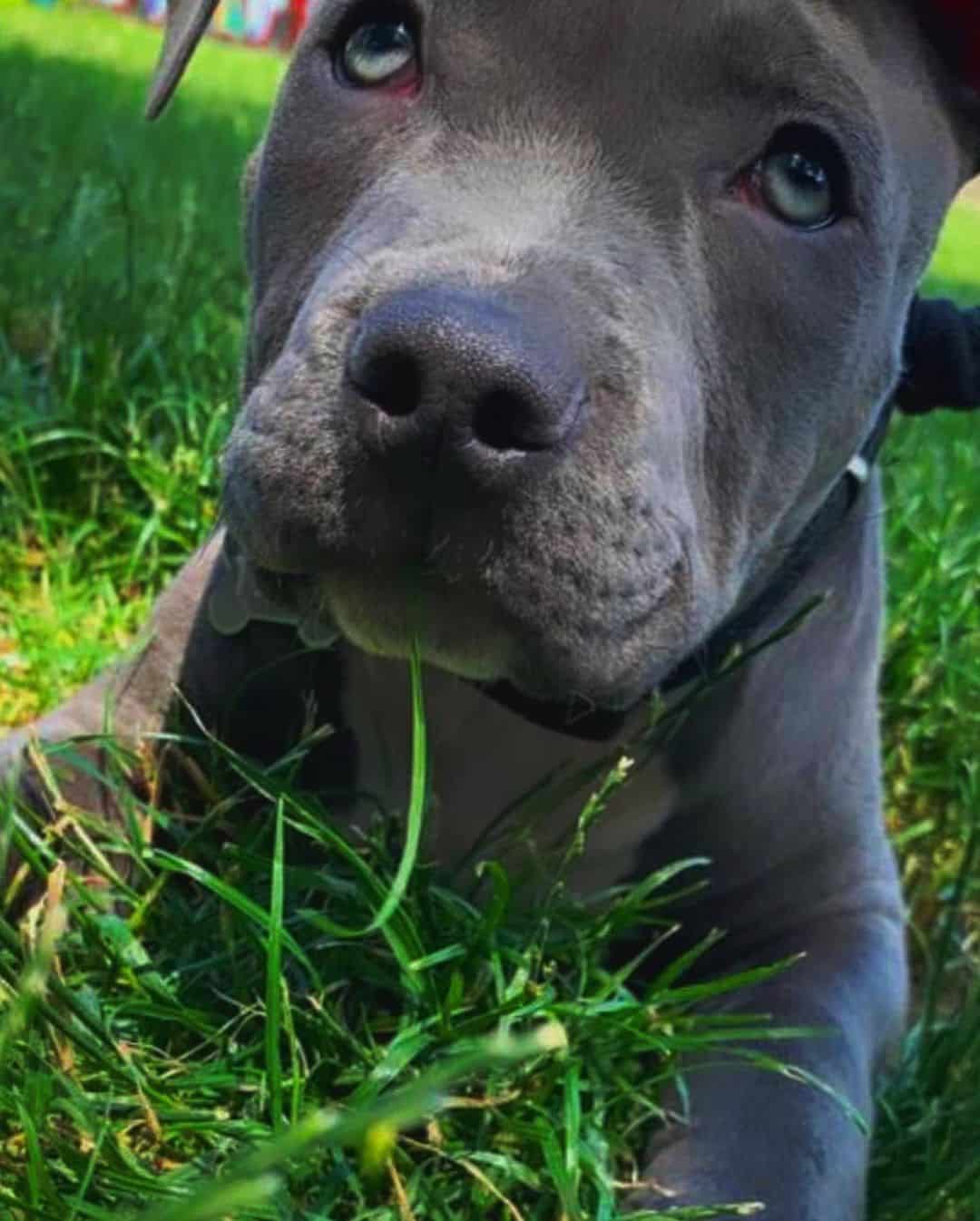
Photo from: @bluediamodkennel
Blue nose Pitbulls are easy to recognize by their blue (or rather, greyish) noses. However, it is very rare to find a blue fawn Pitbull with a blue nose, as the dilution gene that causes this specific shade is connected with a reddish nose color.
Blue fawn blue nose Pitbulls usually are a bit darker and a bit greyer than the same color variation with a red nose. Many breeders and dog experts even argue that these pups shouldn’t be considered blue fawn dogs.
However, some sellers will still sell dogs with a blue nose, and a coat color that truly looks like a blue fawn coat. Whether you’d consider them a blue fawn or not is mostly up to you, as no variety is recognized by the AKC anyway.
Blue nose Pitbulls were rarely used for dogfighting and weight pull. Instead, they were primarily bred for their good looks. While a Pitbull isn’t likely to participate in a dog show, especially not in the U.S. where they are not recognized by the AKC, gorgeous coat colors are still well-respected.
Because of this, they are usually bred to be family members instead of guard dogs, meaning they have a bit more mellow temperaments. These are affectionate, calm dogs that will love nothing more than to spend an entire day around their human family.
Still, it’s important to note that all Pitbulls require extensive socialization and dog training from an early age. They have a strong prey drive, and they were bred to fight other dogs for generations.
While no Pitbull will be outright aggressive for no reason, it’s still important to do all precautionary measures in time.
3. Blue Fawn And White Pitbull
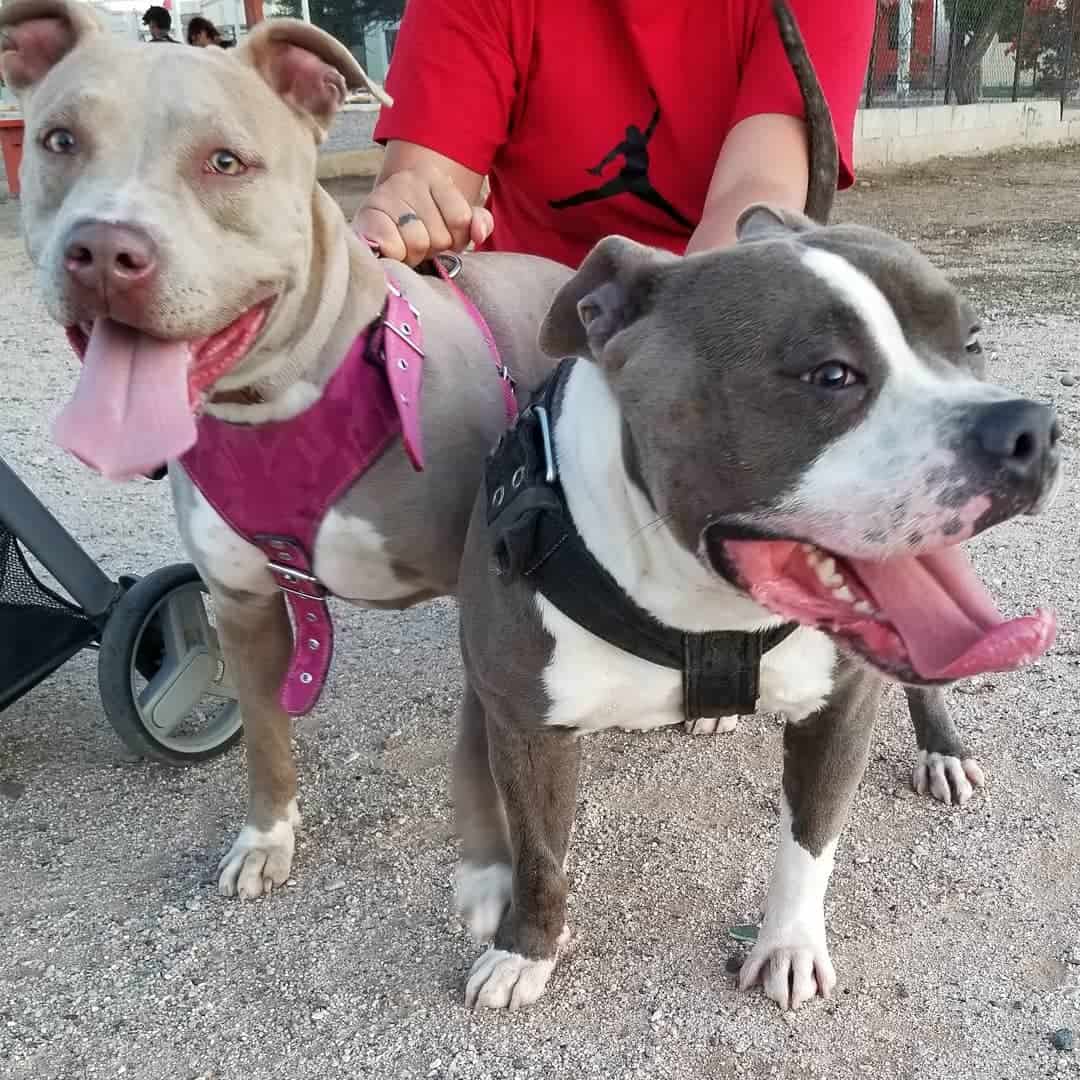
Photo from: @tankthebeast15
Blue fawn and white Pitbulls are the most common color variety of these pooches. Most Pitbulls have white markings on their chest, feet, and tummy, and blue fawn Pitbulls are no exception.
The most important thing is that white should never be the primary color of these dogs. If it is, the dog will be considered faulty, and he might even be at an increased risk of many hereditary health problems.
Many of these dogs will also have a white stripe on their muzzle. Some might have a white mask, but this isn’t common.
4. Blue Fawn Tri Color Pitbull
Tricolor Pitbulls are among the most sought-after Pitbull dogs. This is because they are very rare, and they can cause a Pitbull to look like some tough Rottweiler mix.
Most blue fawn tricolor Pitbulls will have a blue base coat with white markings on their chest, feet, and muzzle. However, they’ll also have tan markings – usually on the dog’s cheeks, above his eyes, and on his chest and legs.
Due to these tan markings, they might look like crossbreeds with Rottweilers.
As the tan shade can be somewhat similar to the blue fawn color, it might be challenging to notice the markings until you look very closely.
All blue fawn tricolor Pitbulls will still have a pale red nose and bright blue eyes.
5. Blue Fawn Brindle Pitbull
Brindle isn’t a color but rather a specific type of coat markings. Do you know those dogs that have tiger-like stripes? Those are brindle dogs.
Of course, blue fawn brindle Pitbulls won’t have such prominent stripes as the ones you might see in other colors. This is because the dilution gene affects any black pigment on the dog.
Because of this, a blue fawn brindle Pitbull cannot have black stripes. Instead, he’ll have stripes in a somewhat darker blue shade.
Just like tan markings, brindle markings can be very hard to notice on most blue fawn Pitbulls. Sometimes, they might simply give dogs a somewhat dusty appearance until you give them a closer look.
Also, almost all blue fawn brindle Pitbulls will have white markings, at least on the dog’s chest.
6. Blue Fawn Merle Pitbull
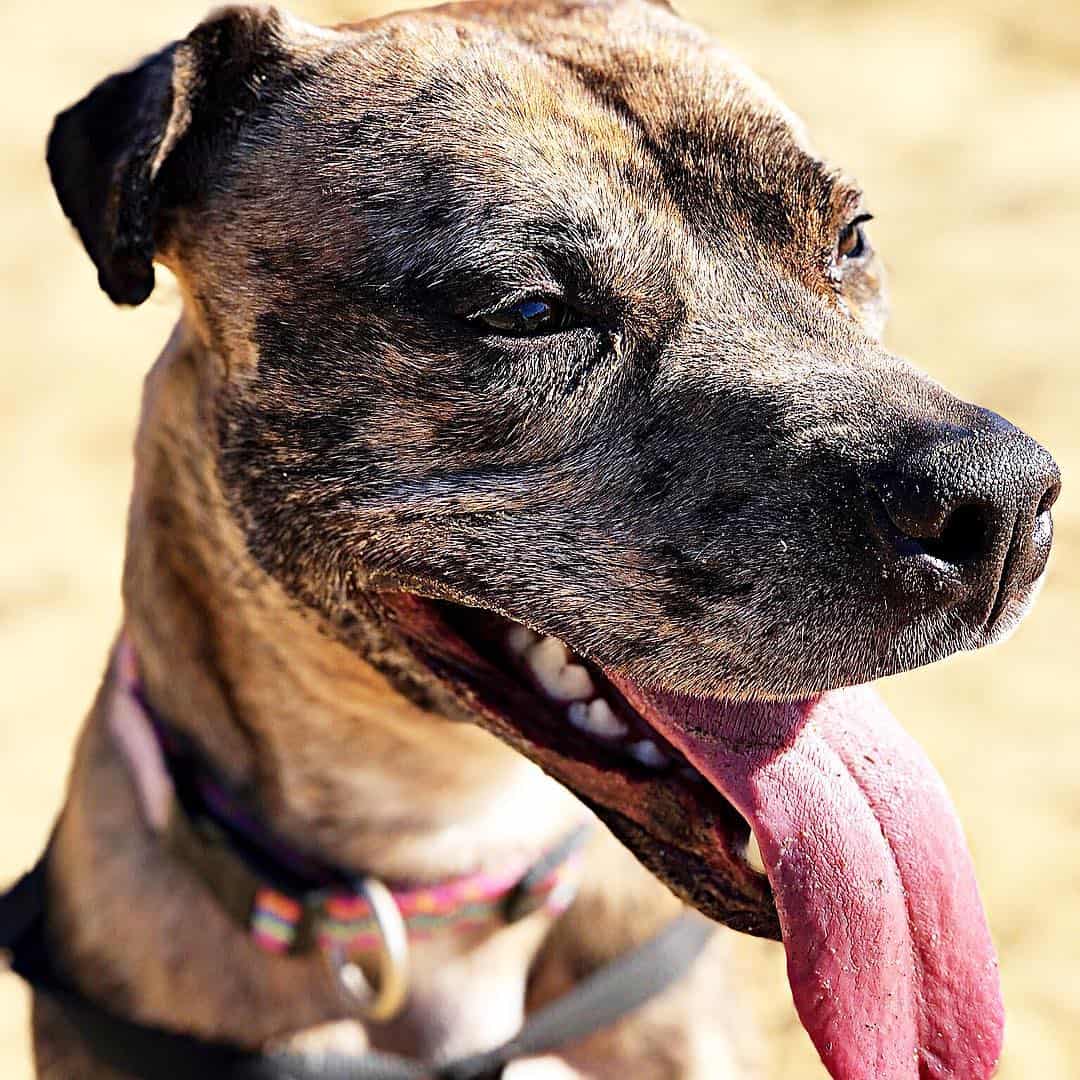
Photo from: @merle_pitbull_j
Merle isn’t a color but a specific pattern. Merle Pitbulls will have a certain diluted base color, white markings, and irregular spots of a darker shade.
Merle is caused by a specific dilution gene called the merle gene. It causes partial and irregular dilution of the dog’s pigment. This is why a dog with a merle dilution will have that pattern.
Not just that, but a merle dog will likely have two different colored eyes (heterochromia), or eyes that are bright blue in color.
In the case of a blue fawn merle Pitbull, the base color will be blue fawn, but he’ll also have white markings and black spots.
Merle Gene Problems
While these dogs have an attractive appearance, there are a few things you need to be aware of when it comes to the merle gene.
Merle gene is not a standard dilution gene. First off, it is a dominant gene, so all it takes is one copy to make it express itself.
Secondly, this gene is connected with a large number of health problems.
These problems likely won’t express themselves when a dog inherits just one copy of a merle gene. Dogs with a merle pattern are likely to be as healthy as any other dog.
However, the issues arise when a dog is a double merle, or rather when he inherits a merle gene from both of his parents.
Double merle dogs won’t have a merle pattern. Instead, they’ll be pure white in color, with blue eyes or heterochromia.
The problem is that the merle gene doesn’t just dilute the pigment in the dog’s skin and coat. Instead, it also affects the dog’s eyes, ears, bones, and heart.
Because of this, most double merles have vision and hearing problems. Many will be entirely blind or deaf. Blue fawn merle Pitbulls are not immune to this. This is why no reputable breeder will condone the intentional breeding of a merle pattern.
Avoiding double merles sounds easy enough. As merle is a dominant gene, all merle dogs will have a visible pattern. All you need to do is avoid breeding them and there will be no double merles – right?
Wrong.
There is something that’s called a cryptic merle. Cryptic merles are dogs that carry a merle gene, but this isn’t apparent on their coat.
Without extremely expensive DNA testing, you can never be entirely sure whether a dog is a cryptic merle or not. As such, breeding any merle dog can result in a double merle.
To reduce the chances of this happening, most breeders will demand accidental (or even intentional) merle puppies be spayed and neutered before they go to their forever home.
Blue Fawn Vs Champagne Pitbull
If you look at blue fawn Pitbulls and champagne Pitbulls, you might think that they are one and the same. At the first glance, there truly don’t seem to be any differences between the two.
This is because the biggest difference comes in the dog’s genetics.
Champagne is a dilution of a red coat color. However, it is caused by a different dilution gene than the one that causes blue fawn coat color.
Because of this, champagne Pitbulls shouldn’t have a single trace of blue on them – although some might have blue eyes, but even this is rare.
They are always red nose Pitbulls, and their coat color will appear to be much brighter compared to blue fawn Pitbulls. Some might even look cream or light golden in color!
Also, most of the time their eyes will be golden or almond instead of blue.
White markings are common in both coat colors, and champagne can also come with a few different patterns, just like a blue fawn.
If you see a dog and wonder whether you have a champagne or a blue fawn is to take a closer look. Do you see blue color in your dog, whether that be in the coat color, shine of the coat, or eye color?
If the blue color is present – congratulations! You have a blue fawn Pitbull.
Blue Fawn Pitbull Puppies For Sale
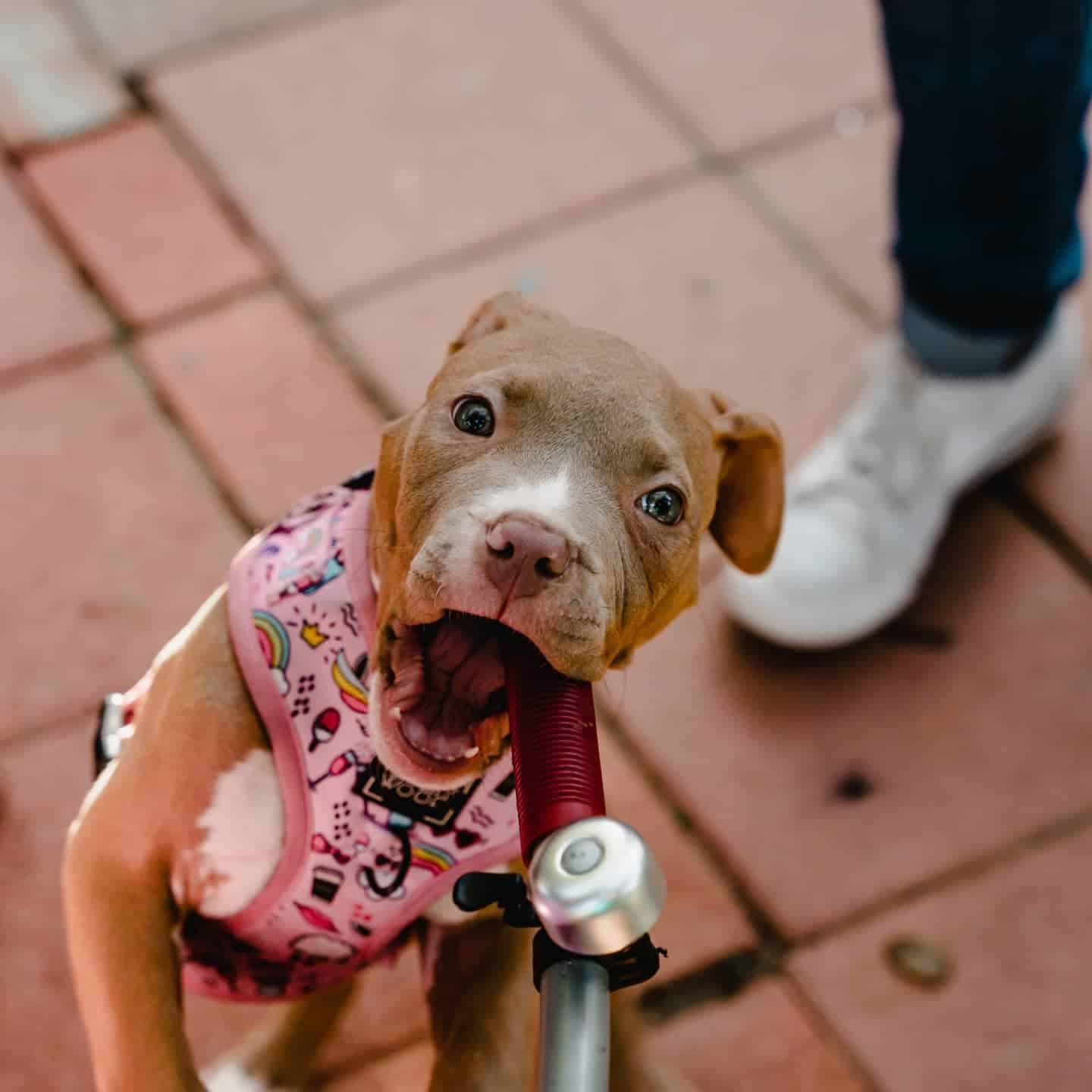
Photo from: @ginger_bluefawnpitbull
When looking for blue fawn Pitbull puppies for sale, you should always look for reputable breeders with plenty of references.
Take a good look at the dogs they are selling. Many irresponsible breeders will sell champagne or regular fawn Pitbulls telling you these are blue fawn Pitties.
A blue fawn Pitbull will have a blue shade present from a very young age. While the exact coat color can change a bit, they should always have that unique dirty fawn shade.
Blue Fawn Pitbull Price
Unfortunately, blue fawn Pitbulls tend to cost much more than standard Pitbulls. There aren’t so many of these dogs, and they are extremely sought-after.
If you buy them from a reputable breeder, expect to pay up to $5,000 for your blue fawn Pitbull puppy. However, other than the coat color, there are a few more things that might influence the price, such as:
• The type of breeder – something I’ll talk about in a minute.
• Bloodline.
• Documentation such as pedigree, health warranty, health certification, and others.
• Dog’s age – the older the dog, the lower the price.
• Gender – female Pits tend to cost less than male blue fawn Pitbulls.
• Shipping costs or other specific amenities.
• Your area – working dogs such as Pitbulls or German Shepherds cost more in rural areas compared to cities, where small dog breeds are popular.
Blue Fawn Pitbull Breeders
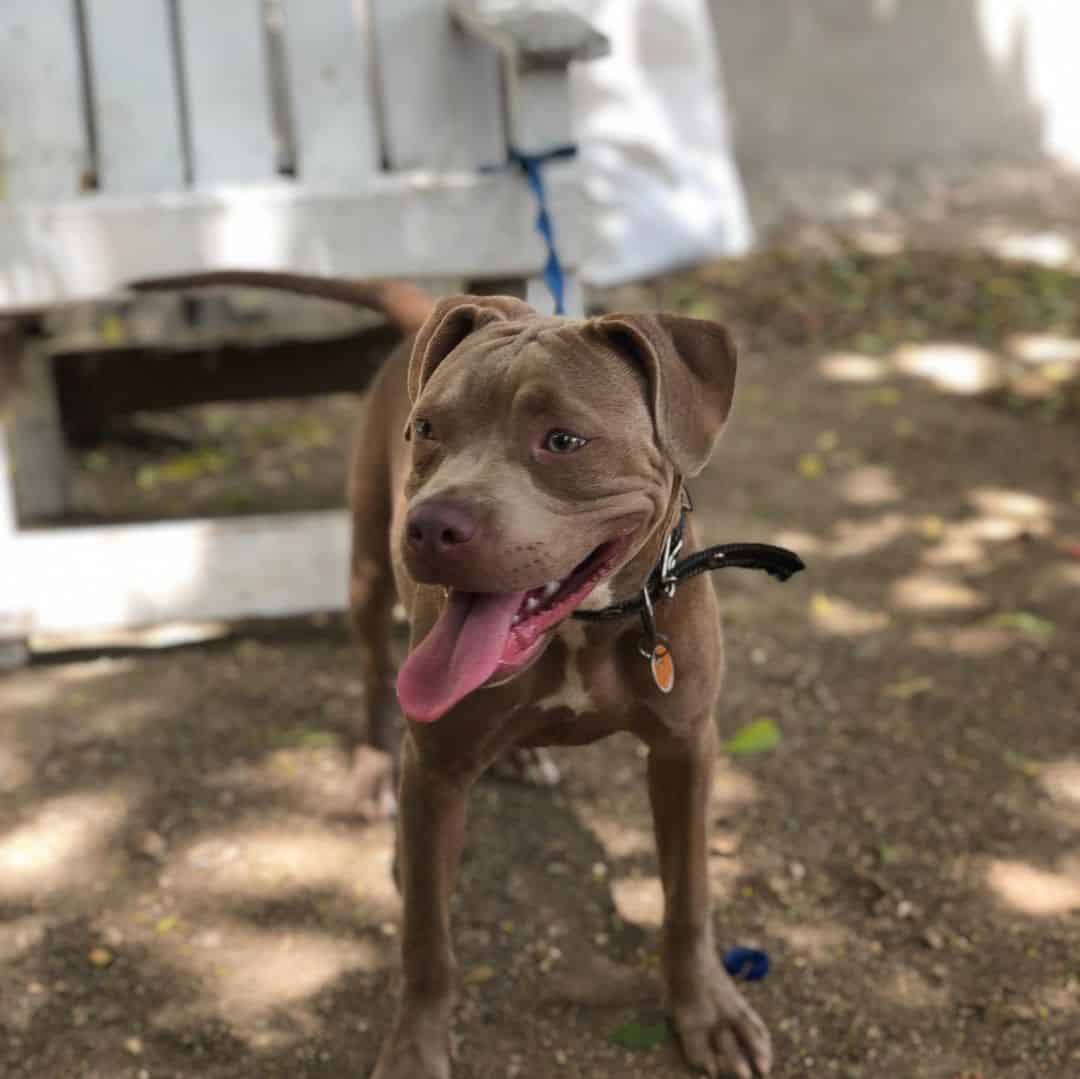
Photo from: @pitbull_blue_fawn
There are three types of locations that might try to sell you a blue fawn Pit puppy:
• Puppy mills.
• Backyard breeders.
Puppy mills are large-scale breeders that sell dogs for profit. They will try to produce as many puppies in as short an amount of time as possible.
Puppy mills don’t really care about their dogs. As such, many of their puppies will have health problems or behavioral issues – something really risky when you have a dog breed that is known for aggressive tendencies.
What’s worse, many of these dogs haven’t even gone through regular vet checkups! Illnesses such as parvovirus or demodex are very common. You might not only get a sick dog, but that dog might get other dogs in your household sick.
Most dogs sold in pet shops come from puppy mills, so you should avoid them.
Backyard breeders are breeders without knowledge or experience. Sometimes, they are simply dog owners that have ended up with a litter they now want to sell. They usually sell their dogs on sites such as Craigslist.
While most backyard breeders love their dogs, they don’t have the knowledge to take care of the puppies, or the parent dogs. This is why their puppies might still have a shortened lifespan and many health problems.
Finally, you have reputable breeders – the only place that I would recommend if you would like to get a high-quality loyal companion dog.
Reputable breeders are certified by the AKC, UKC, or another local kennel club. They have both the knowledge and experience, and they take amazing care of their dogs.
They also conduct many health tests to ensure your puppies are healthy. Pitbulls are prone to some hereditary health issues, such as hip dysplasia. By buying a certified dog, you’ll know you’ll get the best dog possible.
Are Blue Fawn Pitbulls Rare?
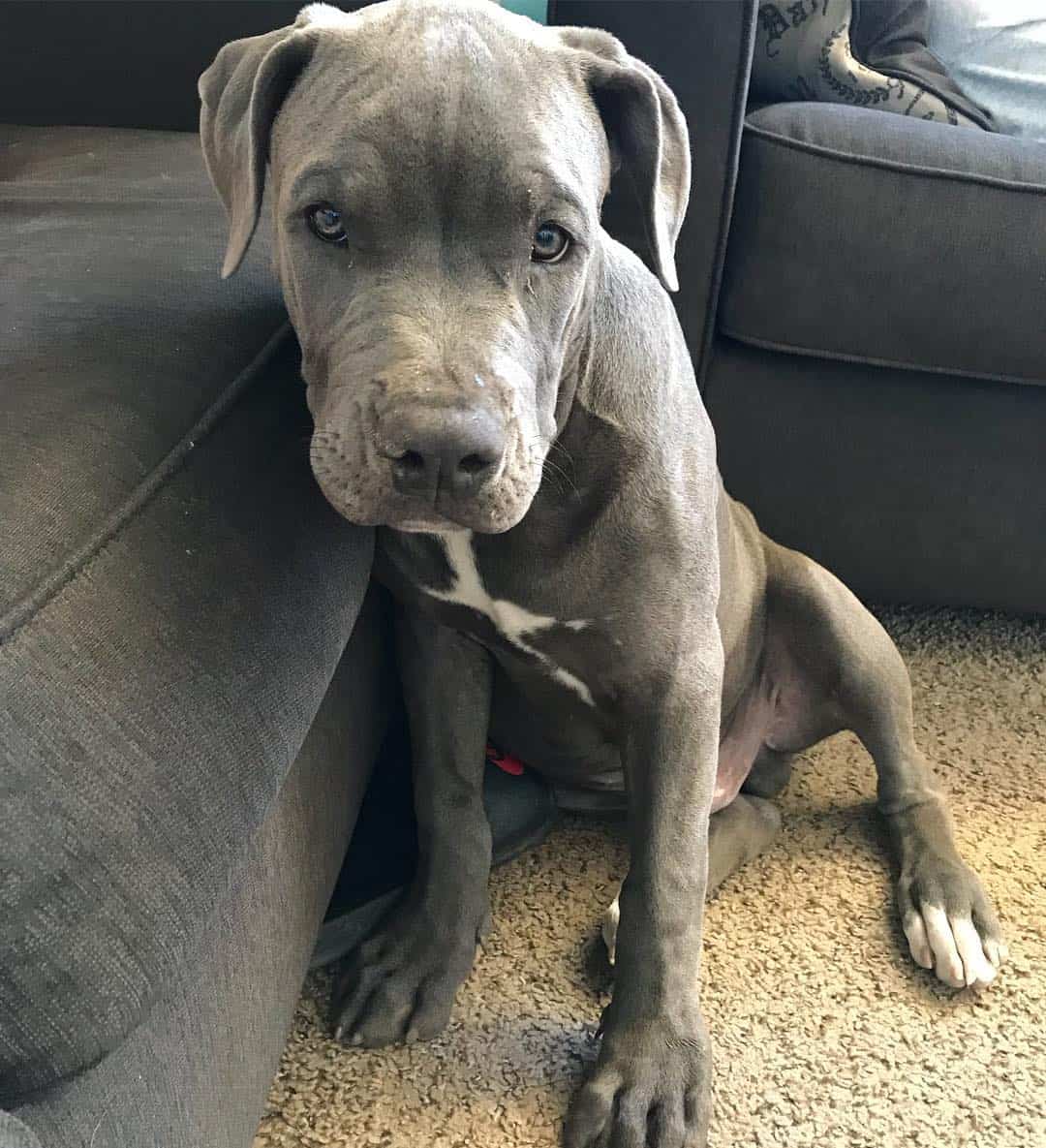
Photo from: @walker_pitbulls_
A blue coat on its own isn’t very rare in the Pitbull breed. However, the unique blue fawn coat color is anything but common.
Various kennel clubs recognize blue fawn Pitbulls, but this doesn’t mean the color isn’t rare.
We’ve already mentioned that blue fawn Pitbulls are the result of a combination of recessive dilution genes. Getting the proper combination is a challenge.
In fact, the most common way to get a blue fawn Pitbull is to breed two dogs in this color. However, even this might result in puppies with different dilution shades. This is why specific breeding practices are required.
Finding one blue fawn Pitbull is a challenge. Finding two can be almost impossible. Because of this, these pups are a rare sight.
Blue Fawn Pitbull Bully
American Bullies are a fairly new type of Pitbulls. They have only become popular in the early 2000s when it is thought that the breed was officially made.
American Bullies were designed to be more muscular, tough-looking dogs compared to the American Pit Bull Terrier. They have a wider chest and a shorter stature, although they generally appear to be bigger than standard Pitties.
Despite their dangerous appearance, these dogs are usually much friendlier compared to standard Pit Bull Terriers, as they are bred to be loyal family companions.
These are high-energy dogs that can easily be trained with some positive reinforcement and lots of love. As they are adaptable, they can even make amazing family pets.
American Bullies can come in all Pitbull colors – including blue fawn.
Blue Fawn Razor Edge Pitbull

Photo from: @nalathebluepit
Razor Edge Pitbulls are not purebred Pitbulls. Instead, this is a Pitbull that has been mixed with various other dog breeds to create an official bloodline that is extremely sought-after.
In other words, it isn’t enough to just crossbreed a Pitbull with a said dog breed to get a Razor Edge Pittie. Your dog must come from a Razor Edge bloodline.
Razor Edge Pitties are laid back and friendlier than standard Pitbulls, despite their dangerous and strong appearance.
They also come in just a few colors – most notably, blue and blue brindle. However, a few breeders specialize in some rarer colors, including blue fawn.
Are Blue Fawn Pitbulls Good Pets?
There are many rumors about Pitbulls being bad pets or aggressive dogs. Allegedly, they might hurt their owners or even cause grave injuries.
However, these stories couldn’t be further from the truth.
While it is true that blue fawn Pitbull dogs can be aggressive toward other dogs due to their history as fighting dogs, human aggression has been discouraged for decades.
In fact, these dogs were bred to highly depend on their humans, making them affectionate and loveable. You’ll hardly find a dog that loves humans as much as a purebred Pitbull!
This love goes on so much that these dogs were used as nanny dogs for decades. They are even prone to separation anxiety if you leave them alone for a prolonged period of time.
Of course, there are some precautionary measures all blue fawn Pitbull owners must take. Most importantly – these dogs need to go through proper training and socialization as early as possible. This will get them used to new environments and people, reducing stress later in life.
Another essential factor to consider is that you should always buy a dog that comes from a well-known bloodline. A dog with an unknown background might have genes for some behavioral problems. This isn’t what you want with Pitbulls.
It is true that Pitbulls can be dangerous. They have a strong bite and they are known for being fearless. If they attack, there is almost nothing that can stop them.
If you know how to deal with powerful breeds and are prepared to invest in a dog from a good bloodline, blue fawn Pitbulls make amazing pets. They are loyal to the core and affectionate, and they would do anything for their owners.
Just remember to feed them proper dog food and get them strong harnesses to make sure they are safe and healthy. A good shock collar might even help with dog training!
With proper socialization , Pitbulls can be very friendly dogs that will love to live in large families!
Not to mention that a blue fawn Pitbull will have an appearance everyone will talk about!
Read Next: 7 Pitbull Breeders In California You Need To Check Out
